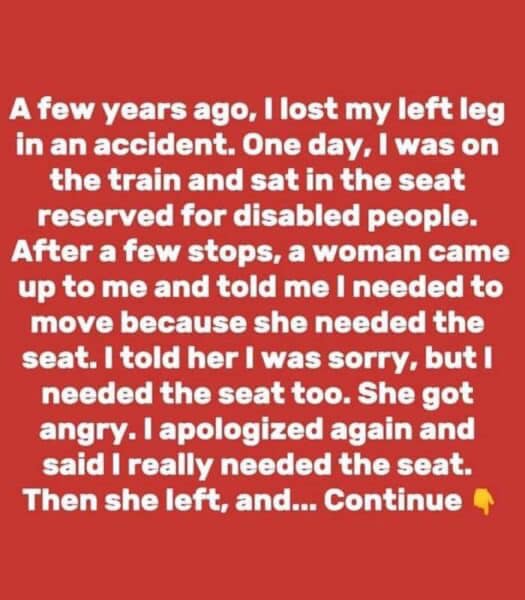
Public transportation often becomes a battleground over priority seating, but a recent viral story brought new attention to the silent struggles faced by people with invisible or misunderstood disabilities. An elderly woman demanded that a young woman with a prosthetic leg give up her seat, claiming she wasn’t “disabled enough” to deserve it.
The young woman later shared, “I lost my left leg in an accident and now wear a prosthetic. While I can walk and even run, standing on a moving train is incredibly difficult. I was in a priority seat when the woman told me to move. I calmly explained that I needed it, but she got angry, called the conductor, and kept insisting I stand. Finally, I rolled up my pant leg, showed her my prosthetic, and said I wasn’t going anywhere. She turned red and quietly got off at the next stop.”
The story sparked a wave of responses from others in the disabled community who related to the young woman’s frustration. One person shared, “My husband uses crutches, but when he’s sitting, you can’t tell he’s disabled. People have yelled at him for using accessible parking or taking priority seating—until they see him stand.”
Another woman added, “I’ve had several leg surgeries. On good days, I walk without a limp, but the pain is real. People judge me for using disabled parking because my condition isn’t always visible.”
These accounts underscore a harsh truth: people are often forced to prove their disabilities to be treated with compassion. Disability isn’t always obvious, and assumptions based on appearance can cause real harm. This viral moment served as a reminder that empathy should come before judgment—and that no one owes a public explanation for why they need a little extra support.





